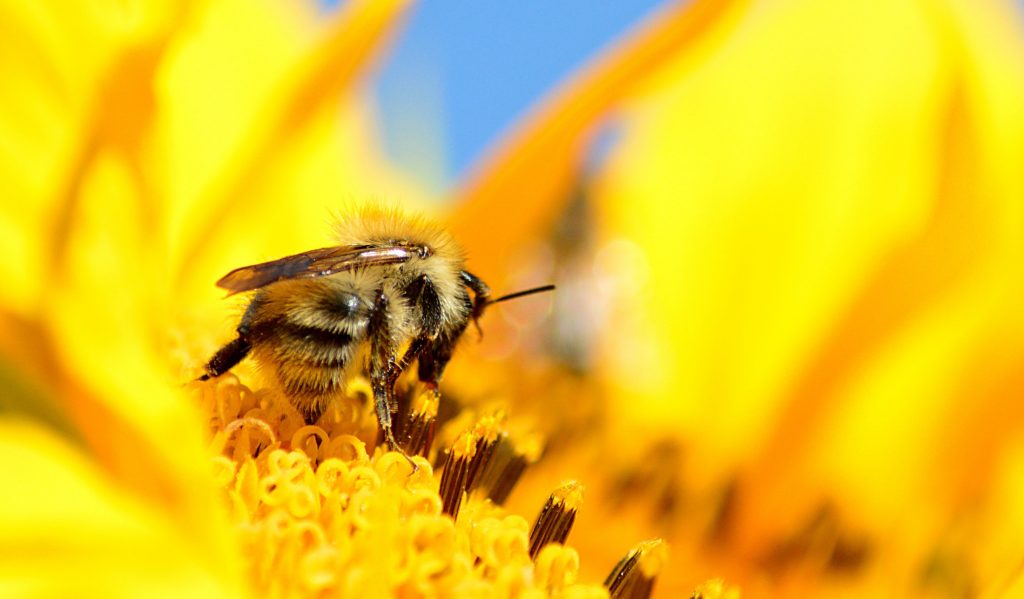Summer is officially over. Your kids have shifted their attention from the beach to another magical place – the pumpkin patch. Whether you grow pumpkins in your community, school, or home garden, this time of the year is exciting for kids as their favorite winter-squash cultivar is nearly ready for harvesting. The early autumn also marks the perfect time to teach young ones a little more about pumpkins. You’ve already taught them about the health benefits of pumpkin, but what they probably don’t know, is that pumpkins are equally dependent on the good work of others to thrive. That’s right, pumpkins are not self-pollinating. That means if they are growing in your garden (backyard, community, or school) the plant requires extra attention to produce a healthy, orange, plump batch of pumpkins. This is especially true given that some of their primary pollinators (bees) have been reduced in numbers over the years.
Let’s have a look at the pumpkin pollinators in your neck of the woods, and what can be done to help attract them to the patch.
3 of Canada’s Most Common Pumpkin Pollinating Bees and What You Can Do to Help Attract Them
Honeybees

Honeybees are one of the most recognizable species of pumpkin-pollinating bees and are found in every province of Canada. That said, they need some added incentive to arrive in your pumpkin patch. They are attracted to biologically diverse gardens, so be sure to follow these tips to creating one in the area where your pumpkins grow. In addition to planting native plants to promote diversity, consider color. Honeybees are attracted to blue, white, yellow, purple and violet blooms, so avoid just planting monochromatic orange-blooming plants. Let the garden space around your pumpkin patch grow au naturale. Constant electrical mowing and weed-wacking drives honeybees away. In addition, avoid using harmful chemicals not just in the garden, but the surrounding area. Instead, use organic-approved pesticides as needed. Lastly, provide beneficial insects with shelter and water. Honeybees will frequently drink from the small drips of irrigation systems and shallow bird baths.
Bumblebees
The tips above will help attract bumblebees too. However, these beefy buzzers have their own set of preferences. For one, they like to protect their pile (the soft/fuzzy hairs) from the sun during a long day of pollinating, Provide them with the ground-cover they enjoy by planting creeping plants near the pumpkin patch. Creeping Phlox is a popular plant in Canada that also attracts a variety of other pollinators.
Bumblebees are also more finicky than their honeybee cousins, so added effort is required to attract them throughout the growing period of your pumpkins. While a pumpkin’s growing period is between 90-120 days, having bumblebees present throughout the bulk of the year is good for the greater good of the garden. Stagger the planting of your blooms throughout the growing period to attract bumble bees for as much of the growing season as possible. You will have already covered your bases for the spring bloom by planting the aforementioned Creeping Phlox. From there, plant summer blooming Hydrangea, and popular fall-bloomers like sunflowers which look great in a pumpkin patch!
Squash Bees
Your kids know honeybees and bumblebees, but they probably haven’t heard of squash bees! As the name implies this type of bee is an important pollinator for pumpkin and squash. Health Canada has been especially concerned about the squash bee populations of late. They have proposed a special review related to risks to squash bees due to exposure to the neonicotinoids insecticides like imidacloprid, clothianidin, and thiamethoxam which are commonly applied to pumpkins, other types of squash and cucumbers. Your household or classroom can to its part to attract squash bees by avoiding deep tillage near the patch, or keeping the area au naturale and untilled altogether. Tillage refers to common soil preparation that involves digging, stirring, and overturning. Squash bees don’t dig it.








